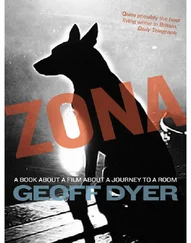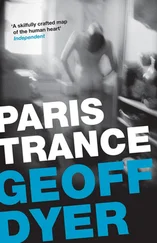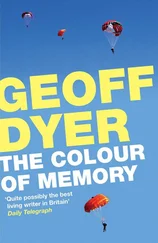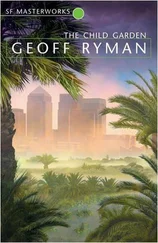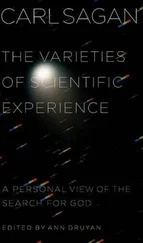Walker smiled, ‘I am looking for a man named Malory. I believe he was in the city on 9 April, on the day of your filming.’
‘That is a coincidence.’
‘The more I think about that word the less sure I am of what it means. I sometimes think it means the opposite of what it’s meant to,’ said Walker.
‘The inevitability of coincidence,’ said Marek and waited for Walker to continue.
‘I wonder if it would be possible to find this man in your film, to discover what his movements were.’
‘It would certainly lend an element of suspense to the film.’
‘Yes.’
‘And what is your interest in this man?’
‘That is hard to explain.’
‘Has he committed some crime?’
‘Not as far as I know.’
‘He is not wanted by the police?’
‘Possibly. No.’
‘And you are not with the police?’
‘No.’
‘A finder?’
‘No.’
‘Tracker?’
‘No.’
‘So what are you?’
Walker shrugged.
‘And you have a photo of this man?’ Marek asked.
‘Yes.’
‘May I see it?’ Walker pulled the photo out of his wallet, unfolded it and passed it over.
‘Do you have any idea of what time he was at a particular place? Otherwise it is difficult to know where to start.’
Walker shook his head.
‘It would be like looking for a needle in a haystack,’ said Marek.
‘Well, maybe not as simple as that,’ said Walker.
They started their search that afternoon. Reasoning that Malory must almost certainly have passed through the Piazza de Repubblica, the main square, they went through that pile, one of the biggest, first. On the assumption that he hadn’t posed for any snaps they discounted the people featured in the photographs and concentrated on figures in the margins, people who had strayed unintentionally into the picture-frame.
It was painstaking, frustrating work and by two in the morning their early enthusiasm had been overwhelmed by the drudgery of unrewarded labour. They still had two-thirds of the pile to go through but decided to call a halt and resume in the morning. Marek searched around the studio for a camp bed and then they sat by the desk drinking beer. They were bleary-eyed, half-stupid with looking, so addicted to the task that, even as they spoke, they continued to pick up odd snaps, glancing at them. Walker drained the final drops from his can, picked up one last snap — and there was Malory. The picture showed a Japanese girl smiling at the camera, a handbag over one shoulder. In the foreground the photographer’s shadow groped towards her. To her right a couple were sat on some steps, eating, and to her left, walking towards the camera, was Malory. Walker reached for the magnifier and immediately Malory’s face, blurred and grainy, loomed into view.
‘I’ve found him.’
Marek came round the desk and looked over Walker’s shoulder. ‘You’re sure it’s him?’
‘Take a look.’ Marek looked from the magnifier to the original and back again.
‘We’re in business,’ he said and cracked open a bottle of vile-tasting spirits to celebrate. Grimacing, they took a shot each.
Within ten minutes of waking they were back in the office, swallowing dark coffee, munching croissants.
‘OK. Now this is where the months of cross-referencing pay off,’ said Marek. ‘The first thing we do is find a copy of this photo in the sequential piles.’ Walker followed him out of the office and into the studio where trays of pictures were stacked up against the walls. Marek pulled out a couple of trays until he found a copy of the photo. ‘OK, so it was taken at about quarter to eleven. Good. Now we can try to guess where he’s going and look at the relevant stuff — but if he doesn’t crop up there we can resort to the sequential piles, look at every picture from eleven o’clock onwards.’
Marek moved along the rows of photos and pulled out four bulging trays. ‘OK, he’s walking towards Via Pisano. Let’s assume he continues down there, so the next place to look for him is probably the Piazza Venezia.’
Marek’s hunch was right. Within an hour they had found Malory again, blurred, recognizable only by his clothes, on the edge of a snap of a boy feeding pigeons. From there Marek reckoned he would have headed down towards Via Salavia. Finding no trace of him there they resorted to the sequentially arranged piles and found him, at 12.15, on the corner of two small streets.
So it went on and by mid-afternoon they had built up a stack of photographs. Walker was amazed how often he had strayed accidentally into the camera’s gaze. The camera was a god, nothing escaped it.
They continued to track Malory’s progress through the city. Marek pinned up a street map and marked out the route Malory had taken with approximate times. They came across him on the edge of a carefully composed shot of the Piazza San Pietro. After Repubblica this was the busiest and most intensely photographed spot in the city and two more photos followed his track from the north-west to the south-east of the piazza. Next he could be seen in the perfectly focused middle distance of a snap showing a hopelessly blurred young couple. This was followed by a sequence of video footage which, in the process of tracking across a piazza, showed him walking down an alley connecting Via Romana to Via Del Corso — where he was duly picked up in the margins of a shot of a statue of Garibaldi framed by a heavily polarized sky. In a photo of a girl in a white dress, stooping down to examine the sandals and belts being sold by patient Africans, Malory was seen walking towards the edge of the frame. In Via San Marco he was snapped inadvertently stepping between the photographer and his intended subject. For a moment he could be glimpsed in a sequence of Super 8, shot on the move as the cameraman walked through a crowd of people.
Then he disappeared for almost an hour. When they picked up his trail again he was in a wide-angle shot of the cathedral steps.
‘What time was it taken?’ asked Walker.
‘Early evening. Look at the shadows. It’s one of the last photographs before the light went. Soon after it got dark there was an incredible thunderstorm.’
This was the last photo of Malory they found. Looking through the remaining photos took little time: only specialist or exceptionally careless photographers continued snapping into the fading light of evening. By nine o’clock there were only a few photos showing the cathedral illuminated by green spotlights or streets filled with the volcanic ghosts of red and yellow car lights.
Walker took copies of the photos and map. Back in his hotel he spread them out on the floor. He levered open a beer, took a swig from the bottle and poured it into a glass. He sat on the bed, drinking, staring at the pictures on the floor. Always his attention was drawn to the photo of Malory on the cathedral steps. Marek had blown up the portion showing Malory walking into a full-length 8 x 10. The fact that it was the last photo of Malory lent it an automatic fascination but there was something elusively familiar about it too. Walker glanced back at the other photos, rummaged through them until he came to the first picture of Malory he had seen, the one cabled through to him at Kingston. It showed just his head, looking off to the right. Placed next to each other the two pictures were strikingly similar. Blocking off everything but the head and shoulders of the cathedral snap, he saw that it was a mirror image of the original photo. Successive enlargements had rendered details as coloured smears in one and grey smudges in the other, but these background blurs coincided. Both pictures had been printed — one the right way, the other the wrong way — from the same negative.
Walker stared at the images, not attempting to fathom the consequences or meaning of this discovery. He picked up the dictaphone and tossed it on to the pillow. Poured another beer and drank it carefully, noticing the taste of each sip, the way the cold glass felt in his hand, the beads of moisture on the bottle.
Читать дальше


